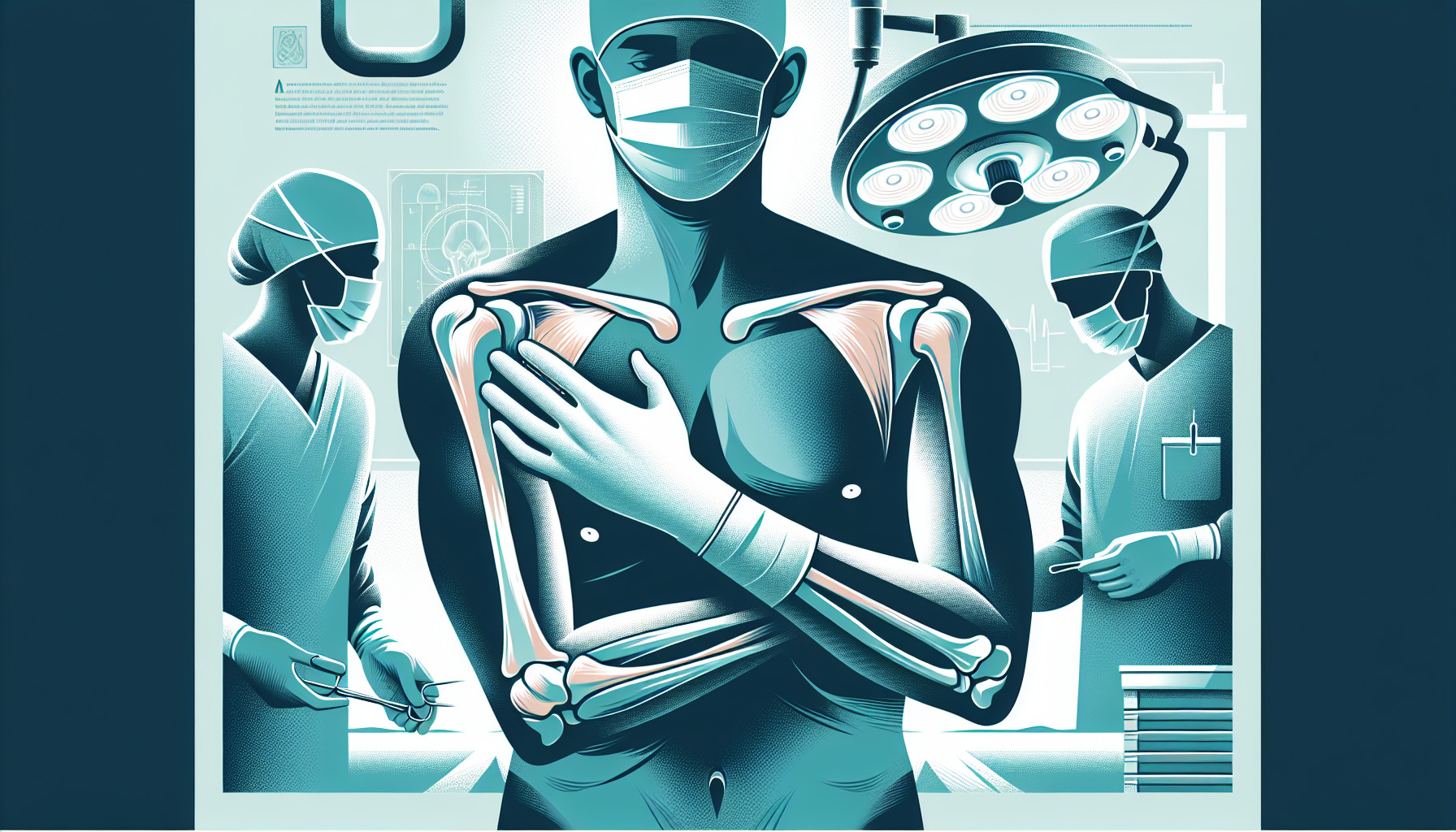Our Summary
This research paper discusses fractures around the shoulder joint in patients who have had joint replacements. This issue is expected to become more common as more people undergo joint replacement surgeries and as the population ages. When diagnosing these fractures, doctors need to consider the condition of the rotator cuff, the stability of the implant, the type of shoulder surgery the patient had, and whether there is a joint infection. New imaging tools like dual-energy CT scans can help with planning surgery. The paper also describes a classification system for these fractures, which considers where the fracture is located, how stable the implant is, and the quality of the bone. Non-surgical treatment is only recommended for patients with serious pre-existing conditions and fractures that haven’t displaced. Otherwise, the standard treatment is to fix the fracture with wiring and plates. If the implant is loose, it may need to be replaced. The paper notes that there are not many clinical studies on this topic, so more research is needed to compare treatments and improve patient outcomes.
FAQs
- What factors do doctors consider when diagnosing fractures around a shoulder joint replacement?
- How can new imaging tools like dual-energy CT scans help in the treatment of shoulder joint replacement fractures?
- What are the standard treatments for fractures around a shoulder joint replacement?
Doctor’s Tip
A helpful tip a doctor might tell a patient about shoulder replacement is to follow post-operative rehabilitation and physical therapy programs diligently. These programs are crucial for regaining strength, flexibility, and range of motion in the shoulder joint after surgery. It is important to work closely with a physical therapist to ensure proper healing and optimal function of the replaced shoulder. Additionally, maintaining a healthy lifestyle with regular exercise and proper nutrition can also aid in the recovery process and long-term success of the shoulder replacement.
Suitable For
Patients who are typically recommended for shoulder replacement surgery are those who have severe shoulder pain and stiffness that does not improve with conservative treatments such as physical therapy, medications, and injections. Common conditions that may warrant shoulder replacement surgery include:
Osteoarthritis: This is the most common reason for shoulder replacement surgery. Osteoarthritis is a degenerative joint disease that causes the cartilage in the shoulder joint to wear away, leading to pain, swelling, and stiffness.
Rheumatoid arthritis: This autoimmune disease can cause inflammation in the shoulder joint, leading to pain, swelling, and loss of function.
Rotator cuff tears: Severe rotator cuff tears that cannot be repaired may require shoulder replacement surgery to relieve pain and improve function.
Avascular necrosis: This condition occurs when the blood supply to the shoulder joint is disrupted, leading to bone death and joint deterioration.
Traumatic injuries: Severe fractures or dislocations of the shoulder joint that cannot be repaired may require shoulder replacement surgery.
Failed previous shoulder surgeries: Patients who have undergone previous shoulder surgeries that have not been successful may be recommended for shoulder replacement surgery.
Overall, patients who are in good overall health and are motivated to participate in post-operative rehabilitation are good candidates for shoulder replacement surgery. It is important for patients to discuss their symptoms and treatment options with their healthcare provider to determine if shoulder replacement surgery is the best course of action for their individual situation.
Timeline
Before shoulder replacement:
- Patient experiences persistent shoulder pain and limited range of motion.
- Patient undergoes various non-surgical treatments such as physical therapy, cortisone injections, and pain medication.
- Patient undergoes imaging tests such as X-rays, MRIs, and CT scans to assess the damage and determine if shoulder replacement is necessary.
- Patient consults with an orthopedic surgeon to discuss the possibility of shoulder replacement surgery.
- Patient undergoes pre-operative evaluations and preparations for surgery.
After shoulder replacement:
- Patient undergoes shoulder replacement surgery, which involves removing the damaged parts of the shoulder joint and replacing them with artificial components.
- Patient goes through post-operative recovery and rehabilitation, which includes physical therapy to regain strength and range of motion.
- Patient may experience some pain and discomfort during the initial recovery period.
- Patient gradually resumes daily activities and exercises to improve shoulder function.
- Patient follows up with the orthopedic surgeon for regular check-ups and monitoring of the shoulder implant.
- Patient enjoys improved shoulder function and reduced pain compared to before the surgery.
What to Ask Your Doctor
- What are the potential risks and complications associated with shoulder replacement surgery?
- How long is the recovery process after shoulder replacement surgery?
- What type of physical therapy and rehabilitation will be needed after surgery?
- Will I need to make any lifestyle changes or modifications after shoulder replacement surgery?
- How long can I expect the shoulder replacement to last before needing a revision surgery?
- What are the success rates for shoulder replacement surgery in patients of my age and medical history?
- How often will I need to follow-up with you after the surgery?
- What should I do if I experience any pain or discomfort in my shoulder after the surgery?
- Are there any specific activities or movements I should avoid after shoulder replacement surgery?
- What type of imaging tests will be used to monitor the condition of my shoulder joint after surgery?
Reference
Authors: Stolberg-Stolberg J, Schliemann B, Raschke MJ, Katthagen JC. Journal: Chirurg. 2020 Oct;91(10):841-850. doi: 10.1007/s00104-020-01225-4. PMID: 32583028
